The COVID-19 pandemic has raised the awareness levels of Americans to new heights when it concerns the quality of air and safe environments in which they work, live and play.
The pandemic has shined an especially bright spotlight on indoor environmental quality, which broadly refers to the impact of a building on the health of its occupants. According to the U.S. Centers for Disease Control and Prevention, factors associated with building-related health conditions include dampness, cleanliness and — most importantly for sheet metal and air conditioning contractors — ventilation.
Naturally, companies in the HVAC industry are finding that they have a significant role to play in improving the indoor environmental quality of indoor spaces from schools to commercial and industrial buildings.
“The pandemic certainly has raised the awareness that ventilation helps to lessen the possibility of infection because you're reducing the exposure to contaminated air,” says Matthew Sano, president of Fisher Balancing Co., a New Jersey-based company that provides balancing services for HVAC systems.
“Those of us who do this regularly knew how important indoor air quality is to people's health, but it wasn't really so much in the public psyche before Covid,” says Max Sherman, principal of EPB Consulting Group, which advises clients on issues related to energy efficiency and environmental quality of buildings.
Top Down
The imperative to promote better indoor environmental quality starts at the top of the federal government. In the American Pandemic Preparedness Plan released in September 2021, the Biden administration cited improved air quality as one of the keys to combatting the spread of airborne viruses.
“Improving indoor air has benefits beyond COVID-19,” said Alondra Nelson, head of the White House Office of Science and Technology Policy, in a March 22 article. “It will reduce the risk of getting the flu, a common cold, or other diseases spread by air, and lead to better overall health outcomes.”
The White House listed developing new technologies to improve air quality as one of the priorities for the core capabilities of the country’s pandemic response efforts. Meanwhile, the Environmental Protection Agency has published guidance aimed at helping everyone from building managers to homeowners improve the quality of the indoor air they breathe. In March, the EPA unveiled the Clean Air in Buildings Challenge. Main components of the program include actions designed to enhance air filtration and boost ventilation.
In response to the Clean Air in Buildings Challenge, SMACNA developed a devoted webpage for the program to help contractors learn more about the challenge. It also offers information contractors can share with potential customers. SMACNA will be promoting this content to building owners and operators, encouraging them to use the member directory to find SMACNA contractors in their areas.
“The general interest in indoor air quality is going to mean that there'll be more openness to improving standards and guidelines about how you should control indoor air,” Sherman says.
Start With the Basics
Demand for cleaner indoor air goes beyond politicians, though, according to Sherman. Indoor air quality “definitely has a high level of interest on the policymaker side,” he says. “Now people are asking, ‘Why can't I have this level of protection most of the time, even if there isn't a pandemic?’”
Managers of commercial and government buildings and homeowners don’t have to go to great lengths to improve air quality in their spaces. “All you really have to do is upgrade the filters in your HVAC system, assuming you have an air system that circulates air, and you've got most of the job done without doing anything heroic,” Sherman notes. Additionally, Sherman points out that better filtration systems also have benefits in areas prone to the effects of wildfires.
Moving past basic filtration systems, ultraviolet-light technology has emerged as a solution for eliminating bacteria and viruses. Hospitals, for example, use UV systems to kill pathogens in the air. Sano points out that UV components can be installed at multiple points within a commercial HVAC system to fit the needs of designers.
In terms of home environments, experts say the harmful effects of cooking don’t get enough attention. That makes range hoods attached to stoves key to improving air quality in homes.
“Cooking is probably the most polluting activity that's done in homes because we're essentially burning something, changing its chemistry, releasing particles in the air,” Sherman says. “Getting a good range hood is really important because what you want to do is catch all that stuff as you cook it and throw it outside.”
Going Retro
Whereas construction standards for most new projects involve up-to-date technology for regulating indoor air quality, Tony Kocurek, owner of New Mexico-based Energy Balance & Integration LLC, sees an abundance of opportunities for sheet metal and air conditioning contractors to retrofit systems in existing buildings. The goal is to bring the buildings in line with modern standards. Depending on the age of the building, that might mean building entirely new heating and cooling systems.
“In the past, some of these systems weren't designed to handle the outside air loads that they're now requiring for proper indoor air quality,” Kocurek said.
The process of upgrading existing systems starts with a sound of assessment of the capacities of buildings, Kocurek said. After that, however, Kurocek says explaining the necessary fixes to the owners of the facilities can be challenging.
“There really needs to be a good educational process for these owners,” said Kocurek, who points out that most improvements in air quality involve measures that building owners should have already taken. “What needs to be hammered home out there with some of these owners: Nobody's asking them to do something that's brand new; they're asking them to do what they should have been doing to begin with.”
Time is Now
Different customers will have different needs in their HVAC units when it comes to upgrading their ventilation systems. For example, Sano notes that hospitals clearly need some of the most powerful technology available. With so many employees still working from home, the HVAC requirements for office space may remain up in the air. Businesses that require indoor seating, such as restaurants, are also evaluating their options.
Jennifer Lohr, recently promoted to VP of Fisher Balancing Co., based in New Jersey, flips air pressure in a hospital.
In terms of retrofitting existing facilities, ventilation in schools turned into a flashpoint during the pandemic. As administrators worked to ensure students could return safely to class, some government funding has been made available to upgrade HVAC systems inside the buildings — the American Rescue Plan set aside $122 billion for schools to make improvements in ventilation and air filtration. Fisher Balancing has worked with schools in underserved communities to redesign their systems and install new equipment. Energy Balance & Integration has partnered with schools in New Mexico to update heating and air conditioning systems that date back to the 1960s, according to Kocurek.
In addition to its webpage on the Clean Air in Buildings Challenge, SMACNA has launched a page dedicated to indoor air quality in schools. It shares opportunities for contractors to work with schools on improving their air quality. School administrators can also use the page as resource to learn about indoor air quality and contact SMACNA members directly in their areas.
Sano warns businesses and homeowners interested in upgrading their systems for better indoor air quality not to delay. Between rising demand for new equipment and issues with the supply chain, he says waiting to purchase new HVAC systems could mean long waits to fill the orders.
Meanwhile, the time is right for contractors and the air conditioning industry to educate the public about the benefits of improving indoor environmental quality, according to Sherman.
“This is a good time — striking while the iron is hot, so to speak,” Sherman says, “to make people understand that it doesn't cost very much to improve your indoor environment.”
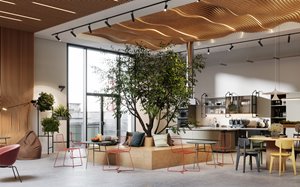
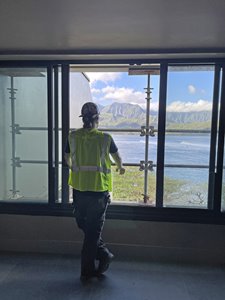
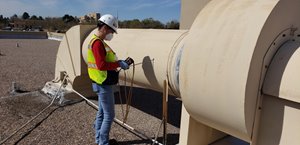
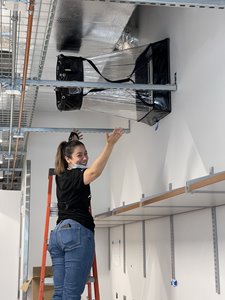
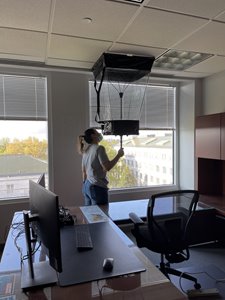
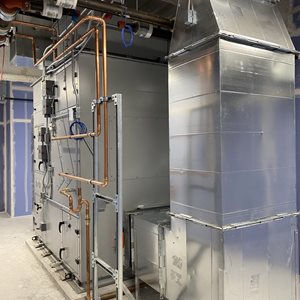

_1.jpg?height=300&resizemode=force)